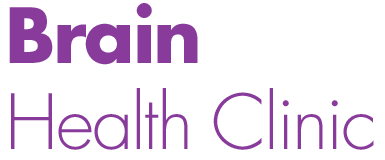The most divine art is that of healing; it must occupy itself with the soul as well as the body.
The terms neurotherapy and neurofeedback are often used interchangeably by reporters and practitioners in psychology and biofeedback. At the Brain Health Clinic, we define neurotherapy as a psychological process for improving brain chemistry and function, in order to benefit the patient’s health and wellness. Neurofeedback is therefore a therapeutic technique that is part of the neurotherapy offered by the Brain Health Clinic.
Defining Neurofeedback
Neurofeedback is a form of neurotherapy that monitors brainwave function and then provides brain stimulation via mild electrical or auditory impulses. It is therefore a type of biofeedback, but with a specific focus on brain function. At the Brain Health Clinic, we only use non-invasive forms of neurofeedback that stimulate the surface of the scalp or the patient’s own nervous system, via the skin, eyes and ears. There are a variety of neurofeedback techniques, each with its own specific benefits and treatment protocols. Based on the symptoms presented by the client, and ideally the results of initial brainwave assessments, the Brain Health Clinic selects the form of neurofeedback that is most likely to produce the desired improvements.
The Value of Initial Neurofeedback Assessments
Ask for directions via any sort of GPS or mapping application and the two most important things to know are:
- Where are you now?
- Where do you want to go?
The situation is similar with neurofeedback. To get a patient to where they want to be in terms of health and wellness, it is important to know where their brain is right now. Some patients just want to “get started” and skip any initial brain mapping, either in an effort to save time or money. In fact, neurotherapy is far more effective and efficient when an initial brainwave assessment is included as part of the therapeutic plan.
Consider the following example: someone calls you to ask for directions, but they don’t know exactly where they are. They can’t read any street signs. All they can do is describe their surroundings. As their guide, you can suggest a direction for them to start traveling and they can then provide you with a description of new landmarks they encounter. If it turns out they are traveling in the wrong direction, changing course takes up valuable time and effort. Understanding your starting point is therefore critical in navigation and it is just as important when navigating the brain with neurotherapy.
The qEEG for Neurofeedback
A quantitative electroencephalograph, or qEEG, is the form of initial brainwave assessment performed by the Brain Health Clinic. In a one-hour clinical visit, we take measurements of your typical brainwave patterns. These results are then made into a “brain map” that is compared to data generated from thousands of other qEEGs collected from patients all over the world. Specific brainwave patterns are associated with different forms of dysfunction and dysregulation related to both physical and psychological trauma suffered by the brain and body. By identifying these dysfunctions at the start via a qEEG, the Brain Health Clinic can then proceed to therapeutic treatments with the most effective form of neurofeedback recommended by practical and clinical experience.
For More Information About Neurofeedback
The Brain Health Clinic provides more information about the specific types of neurofeedback therapy available at our clinic and the types of equipment used for our treatments in the Resources section of our website. Please browse these pages if you have more questions about available therapies and how they are delivered. You may also call us on the phone or write with questions via our website. At the Brain Health Clinic we help your brain and body to perform brilliantly!
Schedule an Appointment
